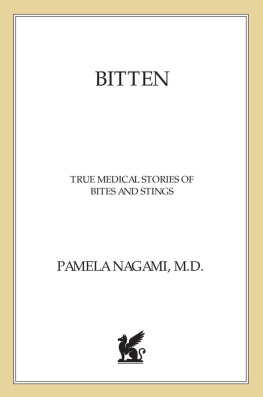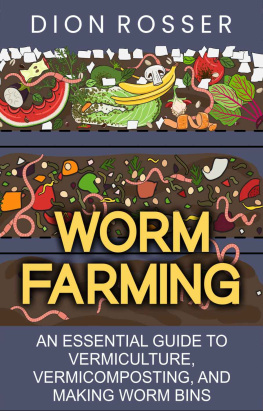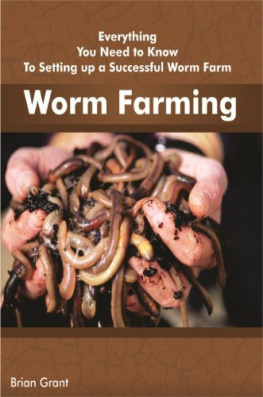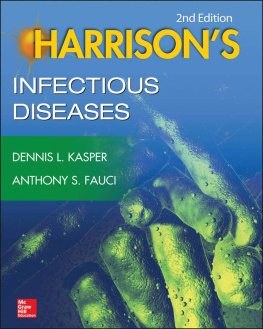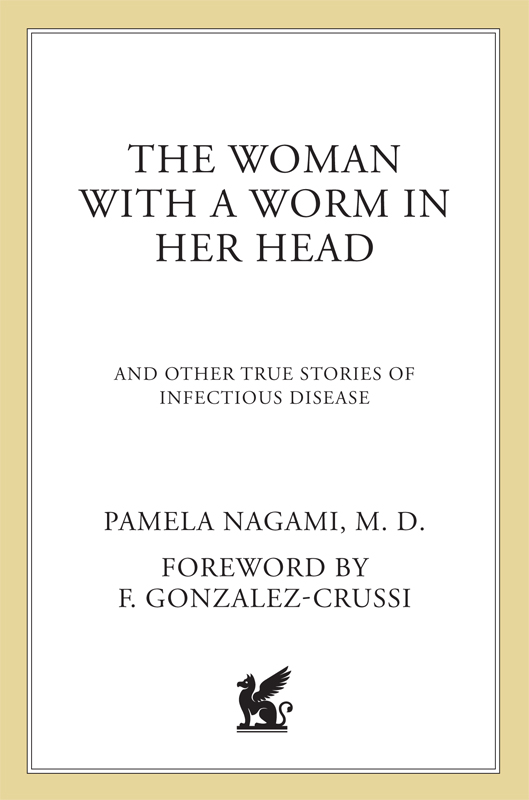
The author and publisher have provided this e-book to you for your personal use only. You may not make this e-book publicly available in any way. Copyright infringement is against the law. If you believe the copy of this e-book you are reading infringes on the authors copyright, please notify the publisher at: us.macmillanusa.com/piracy.
Contents
To Glenn
acknowledgments
I am grateful to my friends and family who read the manuscript and contributed suggestions and criticism: Wendy Herbert, Edward Power, Dr. Claire Panosian, and to Michelle Raffin for help with early rewrites. Thanks to my son, Paul Nagami, for help with the index and the glossary. For their expert clinical advice: Sue Partridge and Dr. Holly Williams at the Centers for Disease Control and Prevention, and Dr. Michel Philippart at the University of California at Los Angeles. For library support: Elliott M. Gordon, Marsha L. Edenburn, and Annette Wolfson. To the hospital and regional laboratories and, especially, to Edward Schackman, Ed Nugent, and Michael Collier. To the doctors, nurses, pharmacists, and all the trained professionals at my hospital, thank you.
Special thanks to my collaborator and teacher, Donna Frazier, to my indefatigable agent, B. J. Robbins, and to my editor, Richard OConnor.
And to the patients and families of The Woman with a Worm in Her Head.
With the exception of the late Dr. Rasoul Soudmand, the patients, nurses, and doctors in my hospital who appear in The Woman with a Worm in Her Head have been given pseudonyms. Outside consultants appear under their own names.
foreword
That many physicians feel compelled to express themselves through literary writing is generally known. Nor should this be a cause for wonderment or surprise. Physicians are placed on the front line, so to speak, of the mighty clash between forces that sustain human life and those that oppose it. By its very nature, their job forces them daily to canvass the conflict at the closest possible range. What they see is far from trivial: on the one hand, the will to livethe dumb striving, the unyielding impetus to survive; on the other, the frost that withers life, the ills that wear it down, the tempests that scathe it. And the physician stands in the midst of it all, a privileged spectator of every phase of this conflict. It is natural that he or she would feel the urge to describe, to record what is occurring. What for? To bear witness; to inform us; to spread hope and to console others, since this is, after all, a physicians calling. Sometimes to convey his/her genuine admiration for the unsurpassed magnificence of the observed phenomena. For the virtuosity of Nature may reveal itself unexpectedly in disease and appear no less admirable when perturbed than when sound. But the physician also writes as catharsis, to alleviate his own anguish. For all we know, this may be his main motive: a means to hold in suspense the misery that comes from glancing too intently on the chaos of the world.
The narratives developed in the present work reflect the experience of a physician who happens to be a specialist in infectious diseases. Her vantage point casts a light on all perceptions. But it is apparent that she is a physician first, and this in the most fundamental acceptation of the term: her professional life is spent in combat in the front line of the mighty struggle. The foe that she faces is overwhelmingly powerful. Bacteria, viruses, and fungi have a history of resiliency and survival that ought to humble the omnipresent pride of our species, if we so much as fleetingly consider the facts. Bacteria were present billions of years before there was any intimation of a human race, and it is a safe wager that they will be around long after the last trace of mankind has vanished.
Nothing in our technology can match this infrangible sturdiness, this amazing invulnerability, tested over eons of evolution. Against this foe, our efforts are powerless and our clever devices nugatory. We are forced to own that, in the long run, we shall lose the battle. But the physician, who is all except defeatist, is unfazed by this, and does not adopt such a sweeping, philosophical view-point. He, or she, is not concerned with the destiny of the human race as a nameless, faceless, all-embracing totality. Or with what will happen in a future that is measured in the geological time scale. His concern is with human beings, here and now. Patients have names, and fears, and joys, and aspirations, and all these form part of the disease. Moreover, diseases never develop in a vacuum; least of all infectious diseases, whose contagiousness best epitomizes the social structure of human suffering. But transmissibility is only one among many factors through which suffering manages to reveal our ties to the community. Doctor Nagami knows this well, and she tells us about her frustration in having to take into consideration such things as the availability of long-term disability benefits for patients who badly need them. Were the physician to consider only the harmful bacteria, fungi, and viruses, his most fundamental role would be subverted. Social and economic conditions have a lot to do with causing the disease and spreading it to the population. For the infectious disease specialist, who bears the responsibility for the detection and control of epidemics, these factors acquire particular relevance.
At a grandiose scale, in the fullness of time, the microbes shall win the battle. And we know they are going to win it, too, in the brief span of our individual lives. For the latter must ineluctably come to an end, and often the proximate cause is an infection that might have been trivial but that the ravages of old age or other circumstances render lethal. By whatever means, in the end we shall be microbial fodder; consumed, perhaps, inside the earth, which has long been the rightful property of the ubiquitous Microbe. Agricultural fields are said to host over a billion bacterial cells per gram of soil. These microbes run the risk of turning the medical specialist into a detached, unfeeling observer; that is, a skeptic, if not a cynic.
And yet, how rewarding it is to confirm that the spirit that breathes in Dr. Nagamis pages evince none of these claudicating attitudes. The vigor of hope is preserved, even in the face of the final incapacity. The depth of a humane vision is maintained to the end. The physicians own failings and shortcomings (for there is a limit to medical skills, despite the much-vaunted progress) are made into a route of escape from a ruinous sense of superiority. Death cannot be abolished, but the doctors ministrations can now retard it more effectively than ever before. Suffering cannot be deleted, but the current means to lessen its pangs exceed any previous measure.
And this is why we all enjoy the physicians chronicle of the mighty struggle. It is a war that concerns us all, whose episodes are always fascinating. All the more so when told, as in these pages, directly, truthfully, and clearly, by a front-line veteran.
F. Gonzalez-Crussi
Emeritus Professor of Pathology
Chicago, IL, August 2001
introduction
I know things about the human body because Ive looked at what lucky people never see.
In a lot of ways, my world of sense memories is like yours. Both of us can close our eyes and remember the softness of a babys skin, the sweet, sharp smell of an orange being peeled, the feeling of the breath that dries the back of the throat in the middle of a run, the way the heart begins to pound. But because Im a doctor who specializes in infectious diseasesa bugs and drugs docI also know the particular geography of the body under siege.


